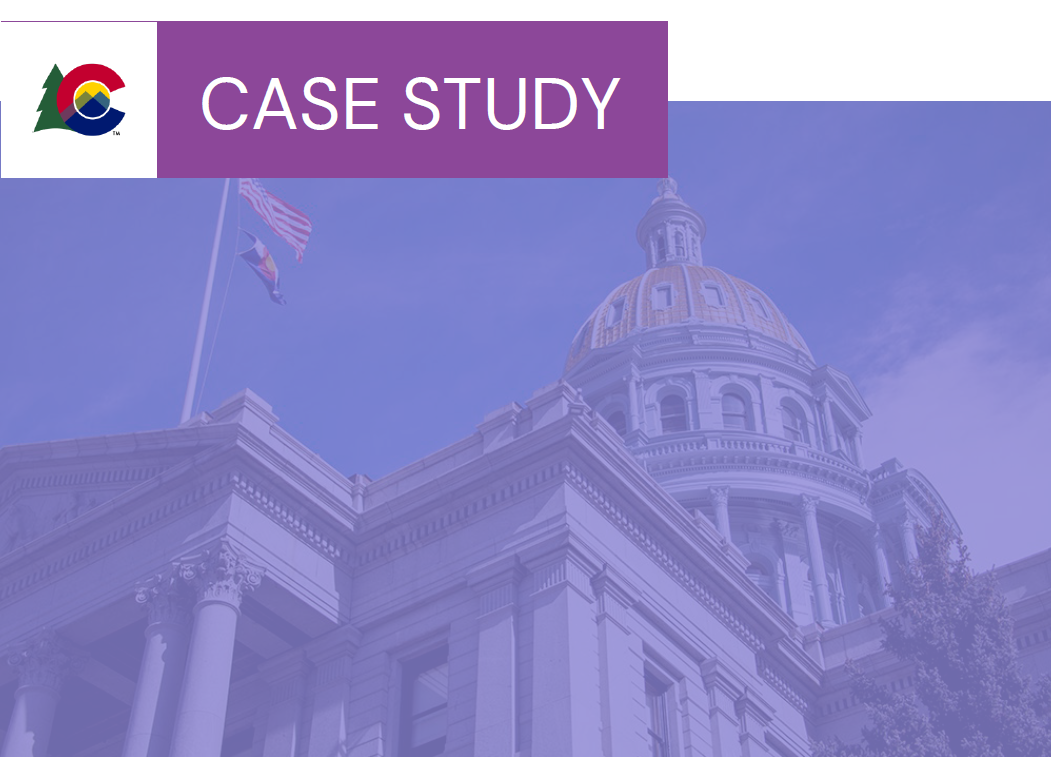Just as states have customized their Medicaid programs and State-Based Marketplaces to meet the needs of their populations, they have been developing innovative approaches to prepare for the unwinding of the Medicaid continuous coverage requirement.
(Download)
Note: Since this paper was published, the Biden administration announced the federal public health emergency will end on May 11, 2023 and there will be a Special Enrollment Period (SEP) on HealthCare.gov from March 31, 2023 through July 31, 2024. This SEP will be available for consumers losing Medicaid or CHIP coverage as a result of the continuous coverage requirement unwinding. Learn more about the SEP here.
In the last three years, the federal government and states declared public health emergencies that provided states with flexibility to respond to the COVID-19 pandemic. The federal public health emergency (PHE) for COVID-19 has been in place since January 31, 2020 and was most recently renewed on January 11, 2023 (the U.S. Department of Health & Human Services has noted it will provide a 60-day notice in advance of the PHE ending). One major implication of the PHE for states is the Medicaid continuous coverage requirement, a policy included in the Families First Coronavirus Response Act prohibiting states and territories from disenrolling those covered by Medicaid during the emergency period in exchange for receiving a temporary 6.2 percent increase in Federal Medical Assistance Percentage (FMAP) for Medicaid. The 2023 Consolidated Appropriations Act delinks the Medicaid continuous coverage provision from the federal PHE. The temporary 6.2 percent FMAP increase will gradually decline, each quarter, from April 1, 2023 through December 31, 2023 for states and territories that follow certain redetermination and renewal rules. States and territories will have up to 12 months starting as early as February 1, 2023 to initiate eligibility redeterminations and enrollment renewals for those eligible for Medicaid, and they will have 14 months, starting on April 1, 2023, to complete these actions (see CMS Guidance for more details). States can terminate Medicaid enrollment for individuals who are ineligible starting on April 1, 2023. Of the enrollees no longer eligible, an estimated one in three will qualify for Marketplace subsidies. Unwinding the continuous enrollment policy presents an extraordinary challenge, but it also presents an opportunity for states to use innovative solutions to connect people to coverage through their Marketplace or to other coverage options.
Challenges for States
The two main challenges for states will be redetermining eligibility for over 90 million Medicaid and Children’s Health Insurance Program (CHIP) enrollees and helping people maintain health coverage. A recent report from the Assistant Secretary of Planning and Evaluation estimates that about 15 million (17.4 percent) Medicaid and CHIP enrollees will leave the program, including about 8 million enrollees (9.5 percent) who will leave the program due to being ineligible. This commentary focuses on strategies states are using or policies already in place that will help ensure people no longer eligible for Medicaid maintain coverage through the Marketplace. These strategies may not be applicable to the five territories, none of which currently operate a health Marketplace.
In addition to redetermining Medicaid eligibility for millions of enrollees over the course of 14 months, states will want to connect people who no longer qualify for Medicaid to plans in the Marketplace or to other appropriate coverage. Some people may have moved to another state, started a new job during the pandemic that provides employer-sponsored insurance or become eligible for Medicare by turning 65. To maintain continuity of coverage and avoid letting consumers fall through a coverage gap, states have focused on facilitating a smooth transition from Medicaid to the Marketplace. During this time, it will be key for states to coordinate with the relevant stakeholders, including their state Medicaid managed care organizations (MCOs) and Marketplace plans, and communicate information about these transitions in a clear way as outlined by the CMS Strategic Approach Overview. It will also be a relevant point during which MCOs could work with individuals to ensure they understand and are connected to the options available to them on the Marketplace.
As a result of recently passed federal legislation, more affordable Marketplace plans will be more accessible and will provide more meaningful coverage to consumers. The American Rescue Plan Act (ARPA) included provisions that enhanced subsidies for people earning up to 400 percent of the federal poverty level (FPL) and eliminated the subsidy cliff through caps on premium costs as a percentage of household income. These provisions were set to expire at the end of 2022, likely leading to a drastic increase in premiums for many people, but the Inflation Reduction Act (IRA) included provisions that extend the premium tax credit enhancements through 2025. These policies have helped about 2 million adults gain coverage in the Marketplace since 2020 and will help keep Marketplace plans more affordable for the next few years.
State Strategies to Address Coverage
States have used several approaches to prepare for the end of the continuous enrollment requirement. Many states also have policies already in place that will support smoother transitions from Medicaid to the Marketplace.
Communication
During this transition, it will be important for states to conduct outreach to Medicaid enrollees to gather updated contact information and share information on the redetermination process as well as to assess eligibility and renew Medicaid enrollment or transition people to the Marketplace. Medicaid agencies traditionally communicate with members through mail but sharing information online through targeted social media outreach may help agencies reach members who may have moved or who are more responsive online.
In early 2020, Tennessee piloted an advertising campaign through social media to target certain populations for Medicaid renewal completion. Within three months, the program led to a 107 percent increase in renewal responses, a 29 percent increase in website traffic and the creation of 16,000 additional online accounts. This strategy can also be used for Marketplace outreach and may be particularly beneficial when used to target Medicaid populations who may soon be transitioning to Marketplace coverage.
Tennessee is also one of 29 states that have already received section 1902(e)(14) waivers to support updating official contact information for Medicaid beneficiaries through their MCOs. Medicaid MCOs may have more updated contact information for enrollees than state agencies, so sharing information between these groups is essential. States can leverage MCOs for contact information sharing and communication where possible. Further, if the health plan also offers a Qualified Health Plan (QHP) in the Marketplace, they may also share information about their plans with Medicaid beneficiaries losing coverage. Arizona has shared member enrollment determination information with MCOs on a regular basis and partnered with MCOs to update beneficiary contact information, helping to ensure communications are sent to the appropriate address.
Facilitating Enrollment
Some states are using navigators or other organizations to facilitate enrollment. Integrating eligibility systems across agencies can also help people seamlessly apply for and enroll in health coverage. The Patient Protection and Affordable Care Act (ACA) already requires states to use a single application for Medicaid, CHIP and subsidized Marketplace plan coverage. The next step in streamlining the consumer application experience is through a shared eligibility system. Idaho uses one eligibility system, the Idaho Benefits Eligibility System, for its Marketplace, Medicaid, CHIP and human services programs. This means people can be seamlessly transitioned from Medicaid to the Marketplace with eligibility information that has already been provided to the state, and there are additional data sources directly available to the state Medicaid agency for conducting redeterminations.
Expanding enrollment periods or creating a continuous enrollment period for people with low incomes can also provide greater access to coverage. While states using the Federally-Facilitated Marketplace do not have the option of changing the federally set open enrollment period of November 1 – January 15, states operating State-Based Marketplaces can extend open enrollment periods. Massachusetts operates a special enrollment period for people who newly qualify for its ConnectorCare plans, the state’s subsidized Qualified Health Plans (QHP) for households with incomes below 300 percent of the FPL, which offer no deductible and low premiums and copays. Massachusetts also adopted the special enrollment period for individuals up to 150 percent of FPL that offers a monthly enrollment opportunity.
Affordability
Keeping plans affordable for people is important, particularly for those transitioning from Medicaid coverage with no cost sharing. Expensive premiums, deductibles and co-pays may be a barrier preventing people from signing up for Marketplace coverage, however, some of these expenses may be offset by ARPA subsidies that were extended through 2025 under the IRA as outlined above. To smooth the transition from Medicaid in Rhode Island, Governor Daniel McKee included an initiative in his Fiscal Year 2023 budget using ARPA funding to cover the first month premium for a QHP purchased on the Rhode Island Marketplace, HealthSource RI. This program is estimated to cost $450,000 per year and is part of an initiative to automatically enroll some people moving from Medicaid coverage to a QHP.
States can also enhance affordability by expanding the types of health plans offered in their Marketplace. The ACA includes a provision giving states the option to create a basic health program (BHP), with the intention of providing low-income people with another affordable health insurance option. This program also supports continuity of care and reduces churn for people whose income oscillates around the Medicaid and CHIP cutoff. In order to qualify, people must have an income between 133 and 200 percent of the FPL. People who are lawfully present in the U.S. as non-citizens and have income below 133 percent of the FPL are also eligible. The plan includes the ten essential health benefits that Marketplace plans must include (ambulatory patient services; emergency services; hospitalization; pregnancy, maternity, and newborn care; mental health and substance use disorder services, including behavioral health treatment; prescription drugs; rehabilitative and habilitative services; laboratory services; preventive and wellness services and chronic disease management; pediatric services including oral and vision care). States receive federal funding equivalent to 95 percent of the premium tax credit as well as cost-sharing reductions that would be provided for people enrolled in QHPs.
While only two states, Minnesota and New York, actively operate a BHP, these programs are wide-reaching and over 1 million people signed up for BHP coverage in 2022. Oregon is currently developing its own program and recently released its proposal after passing legislation in March 2022 to implement the plan. About 85,000 people in the state will be eligible to enroll in the program.
A State Innovation Waiver, or section 1332 waiver, is another way a state can provide affordable coverage to people on the Marketplace. These waivers allow states to test different models and leverage additional regulatory authority to align health plan offerings with state goals to provide high value coverage. Colorado is launching a “Colorado Option” with a goal of providing people with new, low-cost plans that have a standard benefit design and cost-sharing structure. These standardized Colorado Option plans are also designed to improve health equity through lowered cost-sharing on select services and through requirements for carriers to build culturally responsive provider networks. In June 2022, HHS and the U.S. Department of the Treasury jointly approved Colorado’s amended section 1332 waiver, allowing Colorado to fully implement a key provision of the Colorado Option program that requires premium reductions on Colorado Option plans. Starting in 2023, insurance carriers with plans in Colorado’s individual and small group markets are required to offer a Colorado Option plan meeting premium-reduction targets in every county in which they operate. For plan year 2024, the Colorado Department of Insurance has the authority to further enforce the premium reduction targets through public hearings. At these hearings, if it is shown that the cost of care is a cause of a carrier’s inability to meet their premium reduction target, the Commissioner of Insurance may set provider reimbursement rates to support the premium reduction requirements for a Colorado Option plan. The state’s Division of Insurance projects that the waiver, which includes the state’s Reinsurance program, will lower premiums by an average of 22.3 percent in 2023.
Conclusion
The COVID-19 pandemic has been unprecedented and challenging, but the unwinding presents a significant opportunity for states to connect millions of people who gained Medicaid coverage during the pandemic to the Marketplace or other insurance options. Just as states have customized their Medicaid programs and State-Based Marketplaces to meet the needs of their populations, they have been developing innovative approaches to prepare for the unwinding of the Medicaid continuous coverage requirement. States have the chance to innovate and learn from each other, and it will be instructive to continue to see how they approach this challenge.
Resources
- The 10 Fundamental Actions to Prepare for Unwinding and Resources to Support State Efforts (CMS): Lists the ten important actions states can take as they prepare for the end of the PHE.
- Strategies States and the U.S. Territories Can Adopt to Maintain Coverage of Eligible Individuals as They Return to Normal Operations (CMS): Outlines strategies for states and territories to support Medicaid renewal and streamline coverage transitions.
- Medicaid and CHIP Unwinding Planning Efforts: Summary of Best & Promising State Practices from CMS/State Discussions (CMS): Highlights innovative approaches from states as they prepare for the end of the continuous enrollment requirement.
- CMS Marketplace Partner Tools & Toolkits (CMS): Includes outreach resources for navigators, assisters, and other partners to educate and enroll consumers in the Marketplace.
- Strategic Approaches to Engaging Managed Care Plans to Maximize Continuity of Coverage as States Resume Normal Eligibility and Enrollment Operations (CMS): Describes ways to work with managed care plans to support consumer outreach and coverage transitions.
- Ensuring Continuity of Care for Individuals Transitioning from Medicaid to Marketplace: Post-PHE Considerations for States (State Health & Value Strategies): Outlines options for states to support continuity of care for people moving from Medicaid to Marketplace plans after the PHE ends.
- Resources for States on Unwinding the Medicaid Continuous Coverage Requirement (State Health & Value Strategies): Links to tools and resources focused on data and IT, eligibility and enrollment, communication and outreach, oversight and monitoring, Medicaid and Marketplace integration and federal resources.
- Unwinding Provisions in the 2023 Consolidated Appropriations Act (State Health & Value Strategies): Outlines the provisions related to unwinding Medicaid continuous enrollment in the 2023 Consolidated Appropriations Act.
- Communicating the PHE Unwinding: How States Are Conducting Outreach and Planning (State Health & Value Strategies): Provides state examples of operational unwinding plans, enrollee outreach, stakeholder collaboration, and marketplace coordination.
- The End of the Public Health Emergency Will Prompt Massive Transitions in Health Insurance Coverage: How State Insurance Regulators Can Prepare (State Health & Value Strategies): Describes the role of Health Insurance Regulators in preparing for the end of the PHE.
- Mitigating Coverage Loss When the Public Health Emergency Ends (The Commonwealth Fund): Gives an overview of the role of Marketplaces and strategies State-Based Marketplaces can take at the end of the PHE.
- 50-State Unwinding Tracker (Georgetown University Health Policy Institute): Lists the availability of PHE unwinding plans and information by state.
This policy brief was prepared by Anna Heard, Senior Policy Analyst, NGA Center For Best Practices













